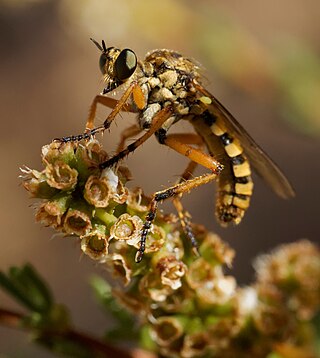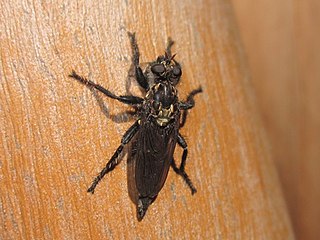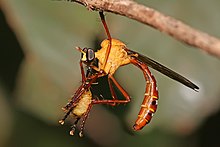
Laphriinae is a subfamily of robber flies in the family Asilidae. There are more than 110 genera and 1,000 described species in Laphriinae. Many are mimics of syntopic bees. Some prey on bees as adults. Larvae of the genus Hyperechia are known to grow inside the cells of Xylocopa bees, feeding on their larvae.

Diogmites is a genus of mainly neotropical flies in the family Asilidae or robber flies.

Stenopogoninae is a subfamily of robber flies in the family Asilidae. There are more than 70 genera and 740 described species in Stenopogoninae.

Leptogastrinae is a subfamily of robber flies in the family Asilidae. There are more than 450 described species in Leptogastrinae.
Nicocles is a genus of robber flies in the family Asilidae. There are about 15 described species in Nicocles.

Neoitamus is a genus of robber flies in the family Asilidae. There are at least 60 described species in Neoitamus.

Stichopogoninae is a subfamily of robber flies in the family Asilidae. There are about 14 genera and at least 230 described species in Stichopogoninae.

Pritchardia is a genus of robber flies in the family Asilidae. There are about six described species in Pritchardia.












